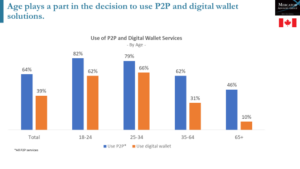 News websites are an irresistible target for hackers because they are so popular. Why? because they are trusted brands, and because — by their very nature — they contain many external links and use lots of outside content providers and analytics/tracking services. It doesn’t take much to corrupt one of those websites, or one of the myriad partners sites they rely upon, like ad networks, content feeds or behavioral trackers.
News websites are an irresistible target for hackers because they are so popular. Why? because they are trusted brands, and because — by their very nature — they contain many external links and use lots of outside content providers and analytics/tracking services. It doesn’t take much to corrupt one of those websites, or one of the myriad partners sites they rely upon, like ad networks, content feeds or behavioral trackers.
Potentially, malware injected on any well-trafficked news website, could infect tremendous numbers of people with ransomware, keyloggers, zombie code, or worse. Alarmist? Perhaps, but with good reason. News websites, which can include both traditional media (like the Chicago Tribune and the BBC), or new-media platforms (such as BuzzFeed or Business Insider) attract a tremendous number of visitors, especially when there is a breaking news story of tremendous interest, like a natural disaster, political event or celebrity shenanigans.
Publishing companies are not technology companies. They are content providers who do their honest best to offer a secure experience, but can’t be responsible for external links. In fact, many say so right in their terms of use statements or privacy policies. What they can be responsible for are the third-party networks that provide content or services to their platforms, but in reality, the search for profits and/or a competitive advantage outweighs any other considerations. And of course, their platforms can be hacked as well.
According to a story in the BBC, news sites in Russia, including the Moscow Echo Radio Station, opposition newspaper New Times, and the Kommersant business newspaper were hacked back in March 2012. In November 2014, the Syrian Electronic Army claimed to have hacked news sites, including the Canada’s CBC News.
Also in November 2014, one of the U.K’s most popular sites, The Telegraph, tweeted, “A part of our website run by a third-party was compromised earlier today. We’ve removed the component. No Telegraph user data was affected.”
A year earlier, in January 2013, the New York Times self-reported, “Hackers in China Attacked The Times for Last 4 Months.” The story said that, “The attackers first installed malware — malicious software — that enabled them to gain entry to any computer on The Times’s network. The malware was identified by computer security experts as a specific strain associated with computer attacks originating in China.”
Regional news outlets can also be targets. On September 18, 2015, reported CBS Local in San Francisco, “Hackers took control of the five news websites of Palo Alto-based Embarcadero Media Group on Thursday night, according to the CBS. The websites of Palo Alto Weekly, The Almanac, Mountain View Voice and Pleasanton Weekly were all reportedly attacked at about 10:30 p.m. Thursday.
I talked recently with Jason Steer of Menlo Security, a security company based in Menlo Park, Calif. He put it very clearly:
You are taking active code from a source you didn’t request, and you are running it inside your PC and your network, without any inspection whatsoever. Because of the high volumes of users, it only takes a small number of successes to make the hacking worthwhile. Antivirus can’t really help here, either consumer or enterprise. Antivirus may not detect ransomware being installed from a site you visit, or malicious activity from a bad advertisement or bad JavaScript.
Jason pointed me to his blog post from November 12, 2015, “Top 50 UK Website Security Report.” His post says, in part,
Across the top 50 sites, a number of important findings were made:
• On average, when visiting a top 50 U.K. website, your browser will execute 19 scripts
• The top UK website executed 125 unique scripts when requested
His blog continued with a particularly scary observation:
15 of the top 50 sites (i.e. 30 percent) were running vulnerable versions of web-server code at time of testing. Microsoft IIS version 7.5 was the most prominent vulnerable version reported with known software vulnerabilities going back more than five years.
How many scripts are running on your browser from how many external servers? According to Jason’s research, if you visit the BBC website, your browser might be running 92 scripts pushed to it from 11 different servers. The Daily Mail? 127 scripts from 35 servers. The Financial Times? 199 scripts from 31 servers. The New Yorker? 113 scripts from 33 sites. The Economist? 185 scripts from 46 sites. The New York Times? 76 scripts from 29 servers. And Forbes, 100 scripts from 49 servers.
Most of those servers and scripts are benign. But if they’re not, they’re not. The headline on Ars Technica on March 15, 2016, says it all: “Big-name sites hit by rash of malicious ads spreading crypto ransomware.” The story begins,
Mainstream websites, including those published by The New York Times, the BBC, MSN, and AOL, are falling victim to a new rash of malicious ads that attempt to surreptitiously install crypto ransomware and other malware on the computers of unsuspecting visitors, security firms warned.
The tainted ads may have exposed tens of thousands of people over the past 24 hours alone, according to a blog post published Monday by Trend Micro. The new campaign started last week when “Angler,” a toolkit that sells exploits for Adobe Flash, Microsoft Silverlight, and other widely used Internet software, started pushing laced banner ads through a compromised ad network.
According to a separate blog post from Trustwave’s SpiderLabs group, one JSON-based file being served in the ads has more than 12,000 lines of heavily obfuscated code. When researchers deciphered the code, they discovered it enumerated a long list of security products and tools it avoided in an attempt to remain undetected.
Let me share my favorite news website hack story, because of its sheer audacity. According to Jason’s blog, ad delivery systems can be turned into malware delivery systems, and nobody might every know:
If we take one such example in March 2016, one attacker waited patiently for the domain ‘brentsmedia[.]com’ to expire, registered in Utah, USA , a known ad network content provider. The domain in question had expired ownership for 66 days, was then taken over by an attacker in Russia (Pavel G Astahov) and 1 day later was serving up malicious ads to visitors of sites including the BBC, AOL & New York Times. No-one told any of these popular websites until the malicious ads had already appeared.
Jason recently published an article on this subject in SC Magazine, “Brexit leads to pageviews — pageviews lead to malware.” Check it out. And be aware that when you visit a trusted news website, you have no idea what code is being executed on your computer, what that code does, and who wrote that code.









 You want to read Backlinko’s “
You want to read Backlinko’s “ You can call me Ray, or you can call me Jay, or you can call me Johnny or you can call me Sonny, or you can call me RayJay, or you can call me RJ… but ya doesn’t hafta call me Johnson.
You can call me Ray, or you can call me Jay, or you can call me Johnny or you can call me Sonny, or you can call me RayJay, or you can call me RJ… but ya doesn’t hafta call me Johnson. For no particular reason, and in alphabetical order, my favorite episodes from the original Star Trek, aka, The Original Series.
For no particular reason, and in alphabetical order, my favorite episodes from the original Star Trek, aka, The Original Series. The late, great science fiction writer Isaac Asimov frequently referred to the “
The late, great science fiction writer Isaac Asimov frequently referred to the “ It’s almost painful to see an issue of
It’s almost painful to see an issue of 
 What do PR people do right? What do they do wrong? Khali Henderson, a senior partner in BuzzTheory Strategies, recently interviewed me (and a few other technology editors) about “
What do PR people do right? What do they do wrong? Khali Henderson, a senior partner in BuzzTheory Strategies, recently interviewed me (and a few other technology editors) about “ There are public-relations disasters… and there are self-inflicted public-relations disasters. Those are arguably the worst, and it’s been a meaningful couple of weeks for them, both in the general world and in the technology industry. In some cases, the self-inflicted crises exploded because of stupid or ham-handed initial responses.
There are public-relations disasters… and there are self-inflicted public-relations disasters. Those are arguably the worst, and it’s been a meaningful couple of weeks for them, both in the general world and in the technology industry. In some cases, the self-inflicted crises exploded because of stupid or ham-handed initial responses.
 It’s official: Internet service providers in the United States can continue to sell information about their customers’ Internet usage to marketers — and to anyone else who wants to use it. In 2016, during the Obama administration, the Federal Communications Commission (FCC) tried to require ISPs to get customer permission before using or sharing information about their web browsing. According to the FCC, the rule change, entitled, “
It’s official: Internet service providers in the United States can continue to sell information about their customers’ Internet usage to marketers — and to anyone else who wants to use it. In 2016, during the Obama administration, the Federal Communications Commission (FCC) tried to require ISPs to get customer permission before using or sharing information about their web browsing. According to the FCC, the rule change, entitled, “ Let’s take a chainsaw to content-free buzzwords favored by technology marketers and public relations professionals. Or even better, let’s applaud one PR agency’s campaign to do just that.
Let’s take a chainsaw to content-free buzzwords favored by technology marketers and public relations professionals. Or even better, let’s applaud one PR agency’s campaign to do just that.  As many of you know, I am co-founder and part owner of BZ Media LLC. Yes, I’m the “Z” of BZ Media. Here is exciting news released today about one of our flagship events, InterDrone.
As many of you know, I am co-founder and part owner of BZ Media LLC. Yes, I’m the “Z” of BZ Media. Here is exciting news released today about one of our flagship events, InterDrone. As Aesop wrote in his short fable, “The Donkey and His Purchaser,” you can quite accurately judge people by the company they keep.
As Aesop wrote in his short fable, “The Donkey and His Purchaser,” you can quite accurately judge people by the company they keep. News websites are an irresistible target for hackers because they are so popular. Why? because they are trusted brands, and because — by their very nature — they contain many external links and use lots of outside content providers and analytics/tracking services. It doesn’t take much to corrupt one of those websites, or one of the myriad partners sites they rely upon, like ad networks, content feeds or behavioral trackers.
News websites are an irresistible target for hackers because they are so popular. Why? because they are trusted brands, and because — by their very nature — they contain many external links and use lots of outside content providers and analytics/tracking services. It doesn’t take much to corrupt one of those websites, or one of the myriad partners sites they rely upon, like ad networks, content feeds or behavioral trackers. Scammers give local businesses a faux award and then try to make money by selling certificates, trophies, and so-on.
Scammers give local businesses a faux award and then try to make money by selling certificates, trophies, and so-on. If you are asked to submit a photograph, screen shot or a logo to a publication or website, there’s the right way and the less-right way. Here are some suggestions that I wrote several years ago for BZ Media for use in lots of situations — in SD Times, for conferences, and so-on.
If you are asked to submit a photograph, screen shot or a logo to a publication or website, there’s the right way and the less-right way. Here are some suggestions that I wrote several years ago for BZ Media for use in lots of situations — in SD Times, for conferences, and so-on. Software-defined networks and Network Functions Virtualization will redefine enterprise computing and change the dynamics of the cloud. Data thefts and professional hacks will grow, and development teams will shift their focus from adding new features to hardening against attacks. Those are two of my predictions for 2015.
Software-defined networks and Network Functions Virtualization will redefine enterprise computing and change the dynamics of the cloud. Data thefts and professional hacks will grow, and development teams will shift their focus from adding new features to hardening against attacks. Those are two of my predictions for 2015. It’s hard being a female programmer or software engineer. Of course, it’s hard for anyone to be a techie, male or female. You have to master a lot of arcane knowledge, and keep up with new developments. You have to be innately curious and inventive. You have to be driven, you have to be patient, and you have to be able to work swiftly and accurately.
It’s hard being a female programmer or software engineer. Of course, it’s hard for anyone to be a techie, male or female. You have to master a lot of arcane knowledge, and keep up with new developments. You have to be innately curious and inventive. You have to be driven, you have to be patient, and you have to be able to work swiftly and accurately.




